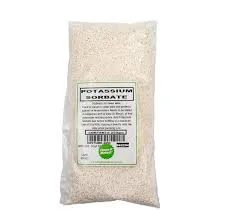
Exploring the Uses and Effects of E270 Food Additive in Modern Cuisine
Understanding E270 The Role of Lactic Acid as a Food Additive
In the world of food additives, E270 holds significant importance. Commonly known as lactic acid, this organic compound plays a vital role in food preservation, flavor enhancement, and even in the nutritional composition of various food products. As consumers have become more health-conscious, understanding the components of what we eat has become a priority. This article explores the functionality, safety, and applications of E270 in the food industry.
What is E270?
E270, or lactic acid, is an organic acid that is produced through the fermentation of carbohydrates by lactic acid bacteria. This process occurs naturally in various foods such as yogurt, sauerkraut, and pickles, giving them their characteristic tangy taste. Lactic acid can also be synthetically produced and is widely used as a food additive.
Functions of Lactic Acid in Food
E270 serves multiple functions in food products. One of its primary roles is as a preservative. Lactic acid lowers the pH of food, creating an acidic environment that inhibits the growth of harmful bacteria, yeast, and molds. This property not only extends the shelf life of perishable items but also enhances safety by reducing the risk of foodborne illnesses.
Another significant function of lactic acid is its ability to enhance flavor. The slight acidity it imparts can balance sweetness and reduce bitterness in various foods. This is especially important in dairy products, sauces, and salad dressings, where lactic acid contributes to a more rounded flavor profile.
Furthermore, E270 is also utilized in the dairy industry as a coagulant in cheese-making. It helps to curdle milk, promoting the formation of curds and whey. In addition to its functional benefits, lactic acid can also act as a humectant, helping to retain moisture in baked goods, making them softer and fresher for longer periods.
e270 food additive

Safety and Regulatory Status
E270 is recognized as safe by several food safety authorities, including the European Food Safety Authority (EFSA) and the U.S. Food and Drug Administration (FDA). It is generally regarded as safe (GRAS) when used in accordance with good manufacturing practices. Lactic acid occurs naturally in the human body, produced during normal metabolic processes, meaning that it poses minimal health risks.
However, as with any substance, excessive consumption may lead to health issues. Some individuals may experience sensitivity to lactic acid, particularly those who are lactose intolerant or have certain metabolic disorders. It is always advisable for consumers to read labels and be aware of their dietary restrictions.
Applications Across Different Food Categories
E270 is used across a diverse range of food categories. In the dairy industry, it is found in yogurt, cheese, and cream products, contributing to the tangy flavor and extending shelf life. In baked goods, it serves to enhance texture and moisture retention, creating products that are both flavorful and appealing.
Moreover, lactic acid is also used in beverages, particularly in fermented drinks like kombucha and kefir, where it contributes to the characteristic sour taste. It is also found in various sauces, pickled vegetables, and even some confections, demonstrating its versatility.
Conclusion
In summary, E270, or lactic acid, is a multifaceted food additive that plays a crucial role in the food industry. Its preservative qualities, flavor enhancement capabilities, and natural occurrence in many foods make it a popular choice for manufacturers looking to create safe, tasty, and longer-lasting products. As consumers, being informed about the ingredients in our food is essential, and understanding the role of additives like E270 can help us make better dietary choices for ourselves and our families. Whether you’re enjoying a tangy yogurt or a slice of cheese, lactic acid is likely working behind the scenes to ensure freshness and flavor.
-
Pure Sodium Dichloroisocyanurate Dihydrate | Powerful DisinfectantNewsAug.29,2025
-
Industrial Chemicals: Quality & Purity for Every IndustryNewsAug.28,2025
-
Nitrile Rubber Honoring Strict Production StandardsNewsAug.22,2025
-
Aspartame Ingredients Honoring Food Safety ValuesNewsAug.22,2025
-
Fertilizer for Balanced Plant NutritionNewsAug.22,2025
-
Cyanide Gold Processing with High Purity AdditivesNewsAug.22,2025
-
Formic Acid in Textile Dyeing ApplicationsNewsAug.22,2025
Hebei Tenger Chemical Technology Co., Ltd. focuses on the chemical industry and is committed to the export service of chemical raw materials.
-

view more DiethanolisopropanolamineIn the ever-growing field of chemical solutions, diethanolisopropanolamine (DEIPA) stands out as a versatile and important compound. Due to its unique chemical structure and properties, DEIPA is of interest to various industries including construction, personal care, and agriculture. -

view more TriisopropanolamineTriisopropanolamine (TIPA) alkanol amine substance, is a kind of alcohol amine compound with amino and alcohol hydroxyl, and because of its molecules contains both amino and hydroxyl. -

view more Tetramethyl Thiuram DisulfideTetramethyl thiuram disulfide, also known as TMTD, is a white to light-yellow powder with a distinct sulfur-like odor. It is soluble in organic solvents such as benzene, acetone, and ethyl acetate, making it highly versatile for use in different formulations. TMTD is known for its excellent vulcanization acceleration properties, which makes it a key ingredient in the production of rubber products. Additionally, it acts as an effective fungicide and bactericide, making it valuable in agricultural applications. Its high purity and stability ensure consistent performance, making it a preferred choice for manufacturers across various industries.





